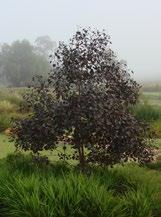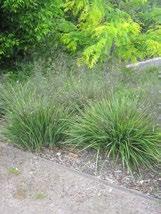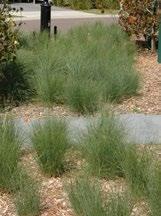Design and Siting Guidelines



Imagine somewhere with wellness at its core.
Where every decision was based around people’s wellbeing and traditional community values are combined with the latest in urban planning.
Where the area’s local farming history informs its future. Where health, happiness, prosperity, sustainability and community all come together to create a place like no other.
They are our aims here at Five Farms. To provide a home where you can not only live, but live well.

Five Farms is a master planned residential community that is being designed and developed by Frasers Property Australia. With wellness at its core and in order to protect your investment, we require that the development of homes maximises a high level of design and quality.
These guidelines deal with the planning and development of vacant residential lots at Five Farms, located within the City of Casey.
The principal aim of these Design Guidelines (“Guidelines”) is to create a coherent vision for the Five Farms community.
Developed to enhance the lifestyle and investment of purchasers, the Guidelines are designed to help ensure all homes at Five Farms are built to a high standard whilst encouraging a variety of housing styles and compatibility with the streetscape.
The Guidelines will assist in providing you with peace of mind, while helping to protect the value of your property.
Each individual house design should contribute to enhancing the surrounding environment and the estate.
Owners are encouraged to construct innovative and appropriately designed homes that address sustainability and complement the estate.
Building Envelopes have been designed for all allotments over 300sqm so that homes are appropriately sited, to help limit overlooking and overshadowing. These can be found in the Building Envelope Diagram in your Contract of Sale. Lots 300sqm and under are subject to the Small Lot Housing Code as designated on the Building Envelope Diagram.

The Design Assessment Panel (“DAP”) will be responsible for the review and approvals of your house plans.
All proposed building works including houses, garages, outbuildings and fencing are required to be approved by the DAP in relation to these Guidelines prior to seeking a Building Permit.
Each home built at Five Farms will undergo a review by the DAP based on its adherence to the Guidelines, set-out below, and how it relates to the overall vision for Five Farms. The DAP will exercise its discretion and will approve outside of these guidelines assessed on its architectural merit.
It is important to note that Covenants or Restrictions on the Plan of Subdivision cannot be changed by the DAP and therefore must always be adhered to.
The Guidelines are subject to change at any time without notice. Building Envelope details for each lot can be found within the Building Envelope Diagram for each stage.
The Design Guidelines will cease to apply as prescribed in the Plan of Subdivision, at which the appropriate local and state government statutory regulations will continue to apply.
Homes must be designed in accordance with the Guidelines and approved by the DAP.
Designs are to be submitted in email format to the DAP for approval as follows:
• House floor plans (1:100 scale)
• Elevations from four sides (1:100 scale)
• Roof plan
Schedule of external materials
• Completed Check List (refer Appendix A of Guidelines).
• Site plan (1:200 scale) showing:
- setbacks from all boundaries
- Building Envelope
- external features including driveways, paths, fencing and outbuildings
- landscaping
When all documents are submitted (refer Appendix A) and meet compliance, allow approximately 10 working days for approval.
Plans that do not comply with the Guidelines will be returned with a detailed list of non-compliance highlighted. Amended plans can be resubmitted for approval.
Any alterations made to the resubmission other than the initial non-compliance should also be highlighted on the plans or detailed in an accompanying letter.
Once approval for your house design is received, you must apply for a building permit.
A Building Permit can be applied for from the City of Casey or a Private Building Surveyor.
Note: Design approval from the DAP does not exempt the plans from any building or statutory regulations. Separate approval must be obtained from the relevant authorities. Approval by the DAP does not infer compliance under the Building Code of Australia, Rescode and other applicable planning or building regulations.
Once a Building Permit has been obtained, and all legal and conveyancing requirements have been met, construction of your house may commence.
The careful siting of houses and garages is important for a number of reasons:
• Ensuring best visual presentation from the street
• Maximising the benefits of solar access
• Promoting energy efficiency
• Minimising overlooking
• Respecting the privacy and amenity of neighbours
One dwelling only is permitted per lot. Dual occupancy and further subdivision are not allowed. This excludes those lots designated for multiple dwellings or medium density housing.
• Maximum allowable encroachment into the front setback is 1.5m which includes eaves, fascia’s and gutters.
An energy smart home takes advantage of the sun’s free warmth and light. Well designed homes reduce the demand on heating and cooling.
For the purpose of these design guidelines, a corner lot is defined as:
• having two street frontages, or
• has a side boundary that adjoins a Walk (10m road reserve), or
• has a side boundary that adjoins a reserve.
• Homes at Five Farms must achieve an energy rating. This needs to be in accordance with the Victoria Home Energy Rating System and be provided in line with obtaining a Building Permit.
• Houses must face the front boundary and present an identifiable entrance to the street. In the case of any lot where more than one boundary abuts a road, the shortest of the boundaries which abuts a road is the front boundary. Where there is a splayed corner on a lot, that part of the boundary which is created by the splay (i.e. the corner section) shall be disregarded.
• Dwellings on corner lots with entrances on side streets must address both frontages.
Where possible, houses should be sited so that the habitable rooms and private open spaces face northwards to receive maximum solar efficiency.
Protect from cold south-westerly winter winds and capture north-easterly summer breezes. With these in mind, position service areas and limit living areas to western aspects where possible.
Optimise cross ventilation and natural light to moderate humidity to keep the house cool and dry.
Provide shelter to outdoor spaces and generous eaves for diffused light, reduced glare and protection from driving rain.

1 – Landscape
Position trees with large canopies to provide shade in summer and reduce glare from surrounding environment. Ensure tree locations and species optimise summer breezes.
2 – Orientation
Position service areas and limit living areas to western aspect, where possible, to reduce exposure to heat in summer and to cold southwesterly winter winds.

In order to maintain standards and ensure all structures comply, construction outside of the Building Envelope is subject to approval by the DAP, and also subject to Council approval. Council approval will not guarantee the DAP’s approval unless the DAP has agreed prior to seeking Council approval.
• All minimum setbacks must be as shown on the Building Envelope Diagram contained within your Contract of Sale.
• All buildings, including garages, must be contained within the Building Envelope specified for that allotment and in accordance with the profile diagrams.
Optimise cross ventilation and natural light to keep the house cool and dry, to moderate humidity.
• Where Build to Boundary zones exist on both sides of a lot, the construction can be erected on either side boundary. But it must maintain a minimum 1m setback to the opposite boundary. Entry recesses will not be regarded as a step in the façade.
• Side and rear setback encroachments are allowed in accordance with building regulations.
Provide shelter to outdoor spaces and generous eaves for diffused light, reduced glare and protection from driving rain.
Ensure your home is designed to be well sealed and ventilated, with high levels of insulation.
• Double glazing or high performance glass is recommended wherever possible. Installing blockout curtains can also assist with keeping the home cool in summer and warm in winter.
• Familiarise yourself with the Nationwide House Energy Rating Scheme and what it means for the thermal performance of your home. All standalone homes in Victoria must achieve at least a 6 Star rating, but the higher the star rating the more energy efficient and comfortable the home will be.
Consider the size and location of your windows. Large unprotected windows to the north and west will make your home feel too warm in summer. Large windows may also require more heating in winter to keep you home comfortable.

For you to choose a home style that fits in with your neighbourhood.
The built form is to be contemporary that incorporates simplistic use of materials. It should also combine a mix of light weight elements with solid forms and materials.
High standards of house design will be required, and a variety of styles are encouraged. Designs should be responsive to the individual attributes of the allotment, having regard to any slope or vegetation.
Designs that break the front of the dwelling into distinct visual elements will be supported. The inclusion of projections integral to the design and style of the dwelling are encouraged. Although classic/traditional/historical reproduction styles are discouraged, fine examples which harmonize with the contemporary feel may be approved at the discretion of the DAP.
Depending on your location throughout Five Farms, your home is recommended to include acoustic treatment.




• The house façades may not be the same as one within three lots either side or across the street, unless – It is approved in writing by the DAP and/or
– The house is part of a row of terraced homes or a medium density development.
• Front entries should be clearly visible from the street and include protruding elements such as a covered verandah or portico treatment.
• Where front doors are located on the side of the dwelling, a pathway and/or covered walk way will need to be constructed to direct people to this entry. Your home must have habitable room windows located on the front façade and provide a clear view to the primary streetscape. They should be appropriately articulated as elements within the façade design and not comprise single highlight windows. (Highlight windows include feature windows with sills more than 1500mm above floor level.)
• Visible side street windows must match the style and quality of the front windows.
• Lightweight infills are not permitted above any window openings along façades directly visible from the street or public open space/reserves. Infills are permitted above garage doors where the colour matches the garage door colour.
• Reflective window tints are not permitted to publicly visible façades.
• External security blinds and roller shutters are not permitted.
• Where a home is 13m wide or greater, at least one of the following is required:
– A setback in the front façade of a minimum 840mm. This step must be in addition to the garage; or
– A portico/verandah with a minimum area of 10sqm. The porch must also have a minimum 1.2m depth at some point; or
– A verandah for the full length of the frontage (excluding the garage).
• There is no minimum dwelling size however dwellings must be proportional to the allotment size with width. To this end dwellings on lots 16m or less in width are required to be a minimum width of 80% of the lot width. Lots over 16m in width are required to have a minimum width of 14.5m.

Wall and façade materials should enhance the visual quality of streetscapes within Five Farms. The use of a combination of finishes that complement your architectural style is encouraged to add to your home’s individuality and interest.
All external materials and colours must suit the character of the neighbourhood and be submitted to the DAP for approval.
• At least 20% of the front of your home must contrast with the main finish. The 20% is calculated excluding windows, doors, garage doors and other openings. For homes on corners and rear accessed lots, this requirement applies to all façades visible from the street.
• Your front façade must include a covered verandah/porch (in. dimension of 1.2m) and a minimum of two different wall materials to add variation, detail and interest.
• Changes in materials and colours are to occur at logical points deemed by the DAP. Render that terminates in the middle of a wall is not acceptable.
• All external surfaces are to be in a finished state (painted or coated) prior to occupation of your home.
• For homes on a corner and rear accessed lots, the materials and colours must continue for all façades visible to the street.
• Bright or fluorescent colours will not be approved, unless they are deemed complementary to the design of the dwelling at the discretion of the DAP.
• In very rare instances, homes may be approved with one material finish, subject to design and architectural merit and at the discretion of the DAP.
When selecting timber, look for products with a Forestry Stewardship Council (FSC) or Programme for the Endorsement of Forest Certification (PEFC) logo. This ensures that your timber has been sourced from sustainably managed forests. Avoid Merbau timbers and other endangered species.
All materials rely on energy use in their extraction, production and installation. However, you can reduce the effect on the environment of your homes’ construction by choosing materials with a lower environmental or ‘embodied carbon’ footprint.
Roofing form and controls are to provide visual interest and enhance the building design. Eaves in particular add significant appeal to your home.
• All roofs must be constructed of masonry, terracotta or non-reflective metal.
• All gutters, rain head overflows and down pipe profiles or treatments must complement the design of the home.
• Eaves are to be a minimum of 450mm deep for those sections of roof visible from the street and must return around the front façade to a minimum of 6m.
• Eaves are required to the whole length of the dwelling which faces a side street and must return a minimum of 4m.
• Eaves are not required to wrap around garage walls on boundary or to parapets subject to merit.
• Non-habitable room windows are permitted within a 6m return if the distance between the overall gutter and side boundary is less than 1m. (This does apply to side street boundaries.)
• Double storey homes with a pitched roof must include a minimum 450mm eave to all sides of the dwelling on the upper storey.
• A minimum roof pitch of 22.5 degrees is required unless it is a skillion, in which case it must have a minimum roof pitch of 15 degrees. Flat roofs must be concealed with a parapet if visible from any public spaces.
Lighter coloured roofs are recommended to reduce heat island effect.
Eaves are recommended to all sides of the home.
To maximise the efficiency of your solar photovoltaic panels, ensure they are facing north wherever possible.
MUST
• Any parapet wall must terminate at a logical point.
Free floating parapet ends are strongly discouraged.
Off street parking is important to creating a welcoming community. However, much more than afterthoughts or add-ons, these buildings should complement the overall look and feel if we are to have a cohesive streetscape.
• If garages are free standing and/or visible from the street, they must match the roof form and be constructed of the same materials as the house.
• The garage door is a major visual element of the streetscape and doors facing the street must be of a colour that complements the house.
• All homes must allow for double garage car accommodation where the front boundary of the allotment is 12.5m or greater.
• Garages must be constructed within the Building Envelope and sited a minimum of 5.5m from the front boundary, unless stated otherwise on the Building Envelope Diagram. This setback also applies for entry to the garage from the side street boundary.
• Garage openings must not occupy more than 40% of the width of the allotment frontage. For dwellings of two or more storeys, on allotments with a frontage width of less than 12.5m, the garage opening must not exceed 25% of the area of the front façade of the dwelling. The area of the front façade will be measured from a two dimensional elevation plan of the façade excluding the area of the roof of the dwelling.
• Double garages cannot exceed 7m in width (internally).
• Single and double garages must be setback a minimum of 840mm from the front or building line, unless otherwise noted in the Building Envelope Diagram.
• No roller doors are permitted.
• Carports can only be constructed if they are not visible from the street.
• Carports may be provided to a rear access lot provided the wall facing the laneway includes a panel lift door, is the full width of the lot and returns at least 1080mm along the side boundary.
• A triple garage is permitted if the lot width has a 20m frontage or more. It must be setback a further 1560mm from the double garage and include additional features to enhance its appearance.
It is preferable for garages to be constructed under the main roof of the house. Free standing garages need to comply with the requirements under must-haves.
Much more than part of the entrances, these additions should be well considered to visually enhance the façade.
MUST-HAVES
• Your home must have a porch, portico or verandah with a minimum dimension of 1.2m which provides adequate weather protection.
• Eaves are not required to verandahs or porticos.
If your home is located on a corner, its design must positively address both the front and side streets, along with any other frontage visible from public open space areas. A consistent architectural style should be used for all visible façades.
Where the DAP considers the dwelling design does not properly or adequately address the street corner and both street frontages, additional treatments may be required to obtain its approval.
MUST-HAVES
For corner and rear accessed allotments, windows that are readily visible from the street must be consistent in style and proportion. These include windows of the front elevation, on the ground floor forward of the corner fence and on the upper storey.
• A feature window must be provided at ground floor level to the secondary street frontage of your home within the first 4m from the front façade and provide a clear view to the secondary streetscape. Highlight windows are not acceptable.
• Front, side street, reserve and rear laneway facing second storey façades must incorporate a habitable room window. They should also incorporate balconies and/or additional setbacks and articulation.
• Double storey dwellings must provide variation in materials between the upper and lower storeys to articulate the corner of both façades.
• Articulation of some form is required to the upper floor side street elevation.
• Double storey homes on corner lots must have a minimum 20% glazing to the upper floor that faces the secondary frontages, measured as an area of the upper floor wall elevation.
• Upper floor windows facing a side street are to be clear glass only.
• Design elements such as verandahs, detailing, feature windows and materials, used on the primary frontage, must continue on that part of the secondary frontage visible to the public realm.


With Bells Road being a major arterial road, it is recommended that homeowners consider including some or all of the following acoustic treatments.

Those fronting Bells Road within <50m of Bells Road extension.
External façade walls be constructed to include masonry brick veneer combined with an internal stud wall clad with 13mm plasterboard.
• The cavity to include fibreglass insulation (min. 75mm thick x 14kg/m3) and the wall system is to be well sealed using resilient mastic (eg Sikaflex Pro.)
ROOF/CEILING
• To be metal deck roofing (min. 0.48mm thick) or conventional roof tile system combined with conventional building blanket incorporating insulation and sisalation.
Internally, the system includes a suspended ceiling constructed using 2no. 13mm FR plasterboard with fibreglass insulation (min. 75mm thick x 14kg/ m3) overlays.
• The suspended ceiling system to include a 250mm air gap and be substantially unpenetrated unless penetrations are treated acoustically so as not to influence the overall performance of the system.
GLAZING
Double glazing element be 6.5mm VLAM Hush / 10mm air gap / 8.5mm VLAM Hush. The proposed configuration should include the nominated glazing and form part of a system achieving a minimum acoustic performance of Rw 37 or, Double glazing system incorporating 10.5mm VLAM Hush / 8mm air gap (argon) / 6mm glass and achieving Rw 39 may also be suitable.
• Internal rooms associated with dwellings should be considered as independent spaces with glazing to be limited in accordance with the following parameters:
– Bedrooms only to include a single facade which incorporates glazing. Where bedrooms are located on a corner, the second facade recommended be a solid construction without any glazed elements. The glazed sections within the single facade should not make up more than 20% of that single facade (not including second facade).
– Living areas can include glazing elements on one or two façades when located on a corner, however the glazed elements should not be greater than 30% of each facade. Glazing facing away with no angle of view of the roadway to be constructed as for Area B Homes.
• Access doors to open into common ‘non noise sensitive’ corridors.
• Construction to be 40mm solid core timber door fitted with suitable acoustic perimeter seals.
• A minimum, acoustic seals to include Raven RP10 to tops and sides of doors, combined with Raven RP38 or RP71 to door thresholds. Double doors be avoided.
Dwelling façades constructed within <80m of the Bells Road extension with direct exposure to traffic noise. Generally, the expectation will be external façades will receive up to 90 degree angle of view of the roadway due to other building structures constructed at closer setbacks to the roadway.
FAÇADE WALL
• Masonry façades including brick veneer, combined with internal stud walls clad with 13mm plasterboard are preferred over light weight construction.
If light weight construction is adopted, facade walls are to be construction with steel studs (min. 92mm) clad internally using 1no. 13mm FR plasterboard, and externally using 9mm CFC.
• For both the masonry and light weight options, the cavity should include fibreglass insulation (min. 75mm thick x 14kg/m3) and the wall system is to be well sealed using resilient mastic (eg. Sikaflex Pro.)
ROOF/CEILING
To be metal deck roofing (min. 0.48mm thick) or conventional roof tile system combined with conventional building blanket incorporating insulation and sisalation.
• Internally, the system should include a suspended ceiling constructed using 1no. 13mm plasterboard with fibreglass insulation (min. 75mm thick x 14kg/ m3) overlays.
• The suspended ceiling system to include a 200mm air gap and be substantially unpenetrated unless penetrations are treated acoustically so as not to influence the overall performance of the system.
• Be an acoustic double-glazing system consisting of 10mm glass, 12mm air gap and 6mmglass or single glazing comprising 10.38mm laminated glass, achieving a minimum acoustic performance of Rw 33.
• Internal rooms associated with dwellings should be considered as independent spaces with glazing to be limited in accordance with the following parameters:
– Bedrooms can include glazing elements on one or two façades when located on a corner, however, the gazed elements should not be greater than 50% of each facade.
– Living areas can include glazing elements on one or two façades when located on a corner, however, the glazed elements should not be greater than 50% of each facade.
Glazing facing away with no angle of view of the roadway can be constructed as for Area C Homes.
• To be as for Area A Homes, unless doors are facing away with no angle of view of the roadway then they can be constructed as for Area C Homes.
Area C Home-Access Door “Solid core timber door well fitted to opening with minimal gaps around the perimeter and conventional weather seals”.
Dwelling façades constructed within <80m of the Bells Road extension which are well shielded from traffic noise by structures including other dwellings or buildings associated with an independent use. Generally, the expectation will be external façades will receive <90 degree angle of view of the roadway due to the shielding elements.
• Masonry façades including brick veneer, combined with internal stud walls clad with 13mm plasterboard are preferred over light weight construction.
• If light weight construction is adopted, facade walls to be constructed using steel / timber studs (min. 90mm) clad internally using 1no. 13mm plasterboard, and externally using 9mm CFC. For both the masonry and light weight options, the cavity should include fibreglass insulation (min. 75mm thick x 14kg/m3) and the wall system must be well sealed using resilient mastic (eg. Sikaflex Pro.).
Can be as per conventional construction.
Conventional thermal double glazing consisting of 6mm glass, 12mm air gap and 6mm glass or single glazing comprising6.38mm laminated glass, achieving a minimum acoustic performance of Rw 31.
Internal rooms associated with dwellings to be considered as independent spaces with glazing should be limited in accordance with the following parameters:
– Bedrooms can include glazing elements on one or two façades when located on a corner, however glazing elements should not be greater than 50% of each facade.
– Living areas can include glazing elements on one or two façades when located on a corner, however gazed elements should not be greater than 50% of each recommend. Glazing facing away with no angle of view of the roadway can be conventional single or double glazing.
• Be a solid core timber door well fitted to opening with minimal gaps around the perimeter and conventional weather seals.
If facing away with no angle of view of the roadway then they can be of conventional construction with minimal gaps around the perimeter of the door.
Letter boxes are a repeating element in the streetscape. With consistent detailing and careful selection these will help to visually link the individual homes and provide a cohesive streetscape character. With this in mind, use simple contemporary letterboxes which complement the dwelling and landscape style. The same could be said of retaining walls and driveways.
• Single post supporting letterboxes will not be approved.
• Retaining walls forward of the dwelling are permitted where they:
– Compliment the style and colour scheme of the home
– Are no higher than 600mm
– Have been approved by the DAP
• The driveway must be offset a minimum of 500mm from the nearest side boundary to allow for landscaping. This must include vegetation.
• Driveway width must match back to the width of the constructed crossover at the title boundary and be completed prior to moving into your home.
• Materials are to consist of:
– Exposed aggregate concrete; or
– Brick, slate or natural stone pavers; or
– Plain and colour concrete.
• Only one crossover and driveway will be permitted for each lot (unless shared) or otherwise considered by the DAP. Approval from Council will also need to be sought.


Here at Five Farms we want to enhance the park-like character of the estate.
• Front fencing is not permitted. For all corner lots and lots adjoining reserves there may be additional fencing requirements. All fencing is to comply with the endorsed Fencing Strategy (Hillsmeade Condition 9 - PlnA00571/19, Littlecroft Condition 5 - PA21-0705, Wirrinda Condition 4 – PA22-0447).
• Side boundary fencing is not to come forward of 1.0m plus the minimum front setback from the front boundary allotment.
• Side and rear fencing to be 1.8m – 2.0m in height, including any capping.
• Fencing is to be COLORBOND® Ironstone®
• Fences on corner lots (as defined under House Orientation page 13) must terminate at least 6m back from the front façade. They must also return to the dwelling to allow for corner treatment.
For corner lots where the lot depth is 21m or less, the length of fence located on the secondary frontage must not exceed 60% of the depth of the lot (excluding the corner splay) taken from the rear boundary towards the primary frontage.
• Wing return fencing, other than on a corner, is to be setback a minimum of 1.5m from the front of the dwelling.
•
•
• You must ensure that your home is connected to all available in ground services according to the service provider’s standards and the broad band optic fibre network if present.
• After settlement, the owner is responsible for the maintenance of the allotment, even if no construction has begun. Council Infringement Notices may be issued if the lot is not neat and tidy.
• You are required to maintain your nature strip.
• Any additions, fixtures, equipment, sheds, outbuildings or pergolas must be located to the rear of your home out of sight from your street or any public reserve. This includes (but is not limited to) satellite dishes, external hot water services, solar hot water systems with roof mounted tanks, water tanks, spa pumps, heating and cooling units, rubbish disposal containers, rain water tanks, washing lines and solar pool heating coils. Solar panels for heating water or generating energy are exceptions to this requirement.
• Evaporative cooler units must be low profile ‘contour’ type and the same colour as your roof, placed at the rear. Ensure the top of the unit is below the roof ridgeline.
• Exposed plumbing (other than downpipes) is not acceptable.
• Any shed, outbuilding or pergola greater than 10sqm in area, that is more than 3m in height, must complement the finish of your home and be approved by the DAP.
• All toilets and a washing machine stop tap are to be connected to recycled water.
• Lots 300 sqm and over must install a minimum 3,000 litre rainwater tank, prior to Occupancy Permit, which must be connected to supply water to toilets and a washing machine stop tap. Recycled water may not be discharged into the watertank.
• Select water fixtures, fittings and appliances with the highest possible WELS rating for your needs and budget.
• Consider choosing a solar hot water system.
• LED lighting is the most efficient choice and should be selected wherever possible.
• Pick the highest energy star rated appliances possible for your needs and budget.
• Ensure you have sufficient space to store your general waste, recycling and green waste bins.
FOR MORE TIPS AND INFORMATION, VISIT:
Five Farms encourages a blend of indigenous vegetation and other landscape elements. Landscape design and plant selection should minimise the need for garden watering. Indicative landscape plans must be submitted as part of the design approval process.
• Include recycled water tap for lawn and garden watering.
• The front landscaping must include a small tree or shrub that is a minimum height of 1m at installation and 2m in height at maturity. Selected from Recommended Species List.
• Artificial turf must not be used in the front landscaping.
• Front landscaping, as well as any garden areas within public view, must be completed within three months of the Certificate of Occupancy being issued.
• All parts of the lot not built or paved that are visible from a front, side street or rear laneway must be well maintained.
Garden beds are to contain organic or pebble mulch.
No less than 20% of your front garden is to be garden beds.
• No more than 60% of your front garden is to be hard paved. This includes the driveway.
Position trees with large canopies to provide shade in summer and reduce glare from the surrounding environment. Ensure tree locations and species optimise summer breezes.
To reduce irrigation water use, we recommend installing a waterwise garden. Also consider planting species native to the local area.
Food waste is one of the biggest contributors to landfill emissions. By installing a compost bin or worm farm, you can reduce your waste to landfill whilst also producing a fertiliser for your garden.




Common Name
Brachyscome White Bliss (Cultivar name)
Botanical Name
Brachyscome multifida (Hybrid)

Common Name
Blue Fescue
Botanical Name
Festuca glauca
Height & Width at Maturity 0.3m x 0.3m

Common Name
Creeping Boobialla
Botanical Name
Myoporum parvifolium

Common Name
Blue Chalksticks
Botanical Name
Senecio serpens
Height & Width at Maturity
0.3m x 0.6m



Common Name
White Correa
Botanical Name
Correa alba
x 2.0m

Common Name
White Gaura
Botanical Name
Gauea lindheimeri
Height & Width at Maturity
1.0m x 1.0m Pot Size 150mm

Common Name
Hop Goodenia
Botanical Name
Goodenia ovata
1.0m x 1.0m

Common Name
Grevillea ‘Scarlet Sprite’
Botanical Name
Grevillea rosemarinifolia (Hybrid) Height & Width at Maturity
x 1.0m

Name
Sea Lavender
Botanical Name
Limonium perezii
& Width at Maturity
x 0.6m

Common Name
Rosemary
Botanical Name
Rosmarinus officinalis Height & Width at Maturity
0.8m x 0.6m
Size

Common Name
Agonis ‘Burgandy’ (Cultivar name)
Botanical Name
Agonis reflexa (Hybrid)
&
x 3.0m
at Maturity

Common Name
Corymbia ‘Sentuous’ syn Dwarf Pink’ (Cultivar name)
Botanical Name
Corymbia citriodora (Hybrid)
Height & Width at Maturity
x 3.0m

Common Name
Vintage Red™
Botanical Name
Eucalyptus cladocalyx (Hybrid)
& Width at Maturity
x 4.0m


Owner's Address: Builder's Name: Contact Name: Contact No:
Email:
Signature of Owner/Builder: (Please circle)
Date: / /
Documentation required to be submitted for approval to the Design Assessment Panel.
1 Site plan (1:200 scale)
• Setbacks from all boundaries
• Building Envelope
• External features including driveways, paths, fencing and outbuildings
• Landscaping
2 House floor plans (1:100 scale)
3 Elevations from four sides (1:100 scale)
• Front, rear and both sides
4 Roof plan (1:100 scale)
5 Schedule of external materials
Each box is to be ticked.
Applications cannot be assessed until all of the above information is available.
Please submit the above documentation via email: FPA.Approvals@frasersproperty.com.au
A copy of this form must be included with the lodgement of plans for approval.